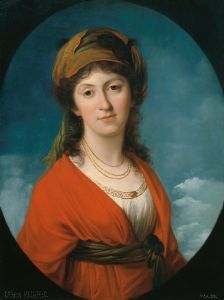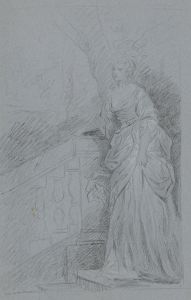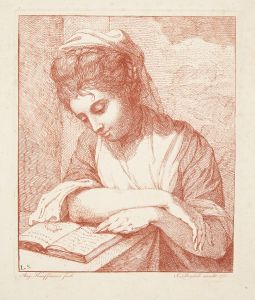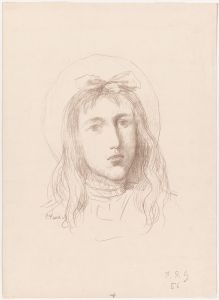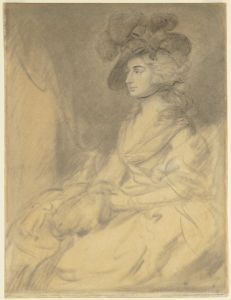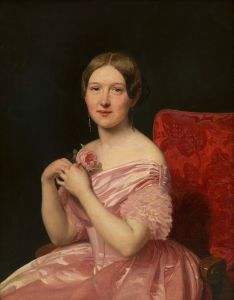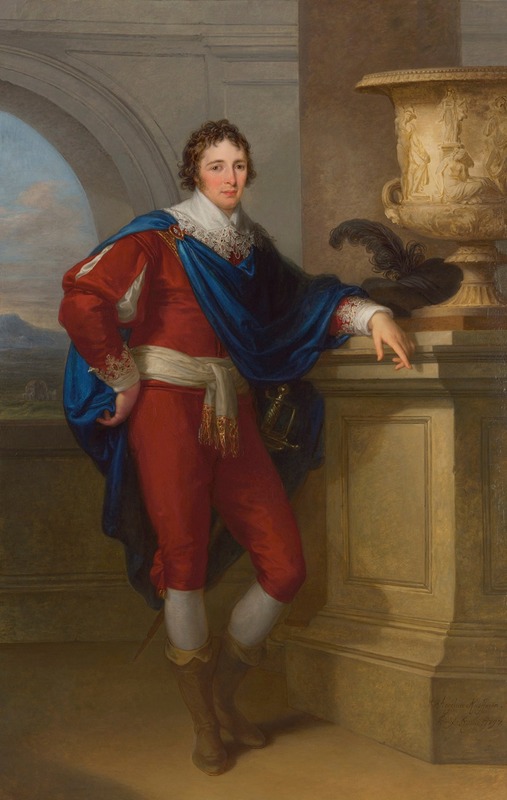
William Henry Lambton
A hand-painted replica of Angelica Kauffmann’s masterpiece William Henry Lambton, meticulously crafted by professional artists to capture the true essence of the original. Each piece is created with museum-quality canvas and rare mineral pigments, carefully painted by experienced artists with delicate brushstrokes and rich, layered colors to perfectly recreate the texture of the original artwork. Unlike machine-printed reproductions, this hand-painted version brings the painting to life, infused with the artist’s emotions and skill in every stroke. Whether for personal collection or home decoration, it instantly elevates the artistic atmosphere of any space.
Angelica Kauffmann, a renowned Swiss Neoclassical painter, created the portrait of William Henry Lambton. Kauffmann was one of the most prominent female artists of the 18th century, known for her portraiture and historical paintings. She was a founding member of the Royal Academy in London and enjoyed a successful career across Europe, particularly in Italy and England.
William Henry Lambton was a British politician and landowner, born in 1764. He was a member of the Lambton family, a prominent family in County Durham, England. Lambton served as a Member of Parliament for the City of Durham from 1797 until his death in 1797. His political career, though brief, was marked by his support for reform and his opposition to the policies of the government under Prime Minister William Pitt the Younger.
The portrait by Kauffmann captures Lambton in a manner typical of her style, which often combined elements of Neoclassicism with a sensitivity to the character and status of her subjects. Kauffmann's portraits were known for their elegance and the way they conveyed the personality and social standing of the sitter. In the case of William Henry Lambton, she would have aimed to reflect his status as a gentleman and a politician.
Kauffmann's technique involved the use of soft colors and a delicate touch, which can be seen in the rendering of fabrics and skin tones. Her ability to capture the subtleties of expression and posture allowed her to convey a sense of the sitter's inner life and social position. This skill is evident in her portrait of Lambton, where she likely employed these techniques to present him as a figure of refinement and intellect.
The portrait of William Henry Lambton by Angelica Kauffmann is an example of her work during a period when she was highly sought after by the British aristocracy and gentry. Her ability to navigate the social and artistic circles of her time allowed her to secure commissions from influential patrons, which contributed to her enduring legacy in the art world.
While specific details about the commission of this portrait are not widely documented, it is consistent with Kauffmann's oeuvre during her time in England. Her portraits often served as both personal mementos and public statements of the sitter's identity and status. The painting of Lambton would have been intended to convey his prominence and character to both contemporaries and future generations.
Kauffmann's work, including the portrait of William Henry Lambton, remains significant in the study of 18th-century art, particularly in understanding the role of women artists in a predominantly male-dominated field. Her ability to capture the essence of her subjects while adhering to the stylistic conventions of her time has ensured her place in art history as a pioneering and influential figure.









